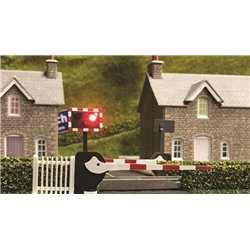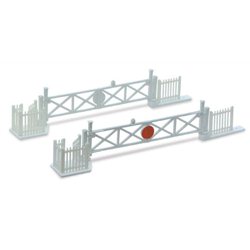The best scale to model armour subjects will depend to some degree on the personal preferences of the individual...
No products
Product successfully added to your shopping cart
There are 0 items in your cart. There is 1 item in your cart.
Search Tips
What are my options for motorising a level crossing?
There are a few options for motorising a level crossing on a model railway layout:
Servo motor: One option is to use a servo motor to operate the level crossing gates. Servo motors can be controlled with a servo decoder, allowing smooth operation of the gates remotely through the layout's control system. They can be a good option for layouts with more complex control requirements.
Solenoid motor: Another option is to use a solenoid motor to operate the level crossing gates. Solenoids can be controlled through a switch or a relay, and provide a strong and reliable mechanism for opening and closing the gates.
DC motor: A DC motor can also be used to operate the level crossing gates. They can be operated with a motor controller and can provide smooth and reliable operation for the gates.
Integrated motor: Some level crossing models come with an integrated motor or motorised mechanism. These can be a good option if the modeller requires a simple and easy-to-install solution for their layout.
When choosing a motorising option for a level crossing, it is important to consider a number of factors such as the size and weight of the gates, the layout's control system, and the budget. With the right motorising system, it is easily possible to add a realistic and functional level crossing to a model railway layout.
Click here to receive the tips weekly in your mailbox. You can unsubscribe at any time.










